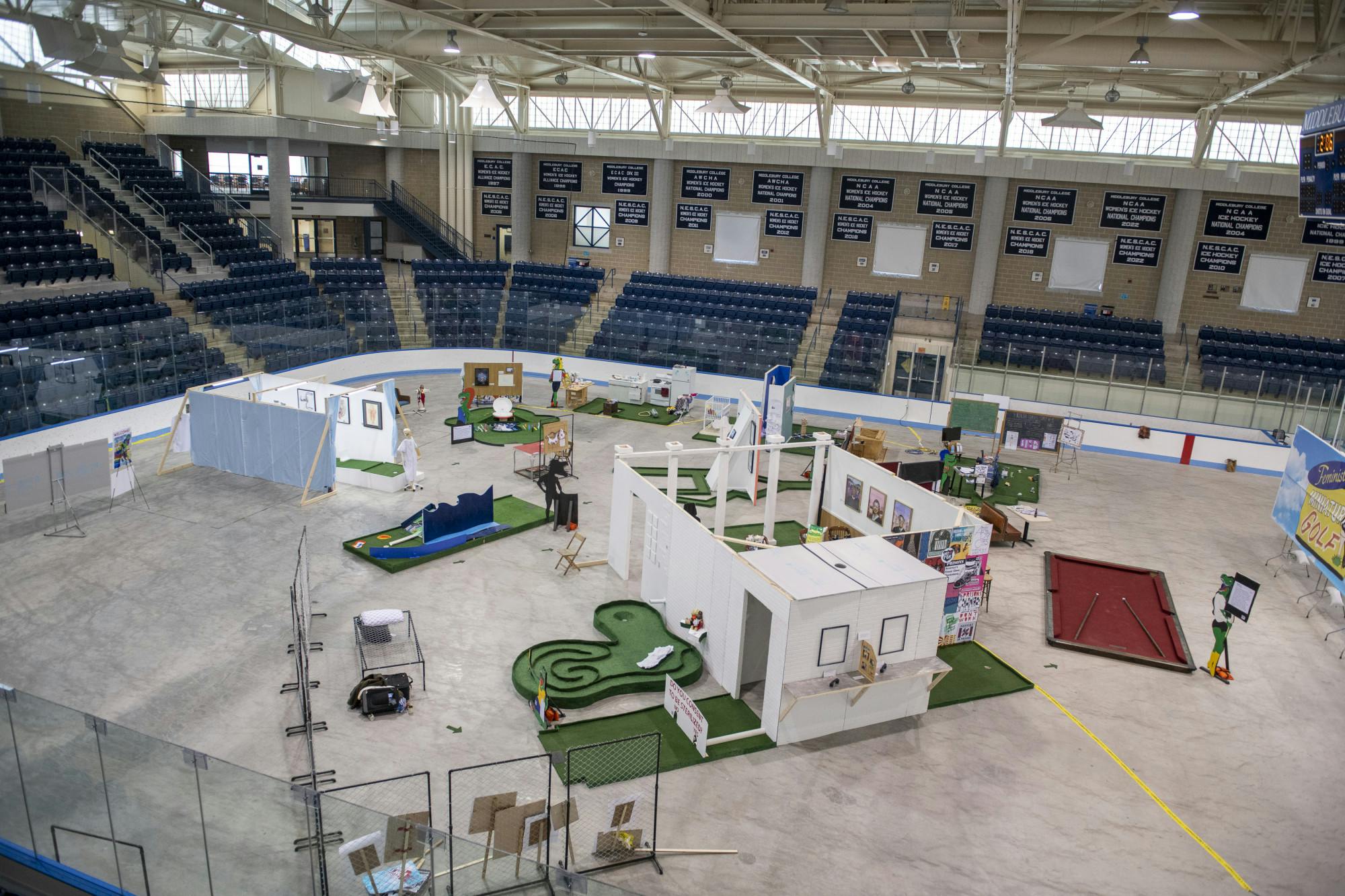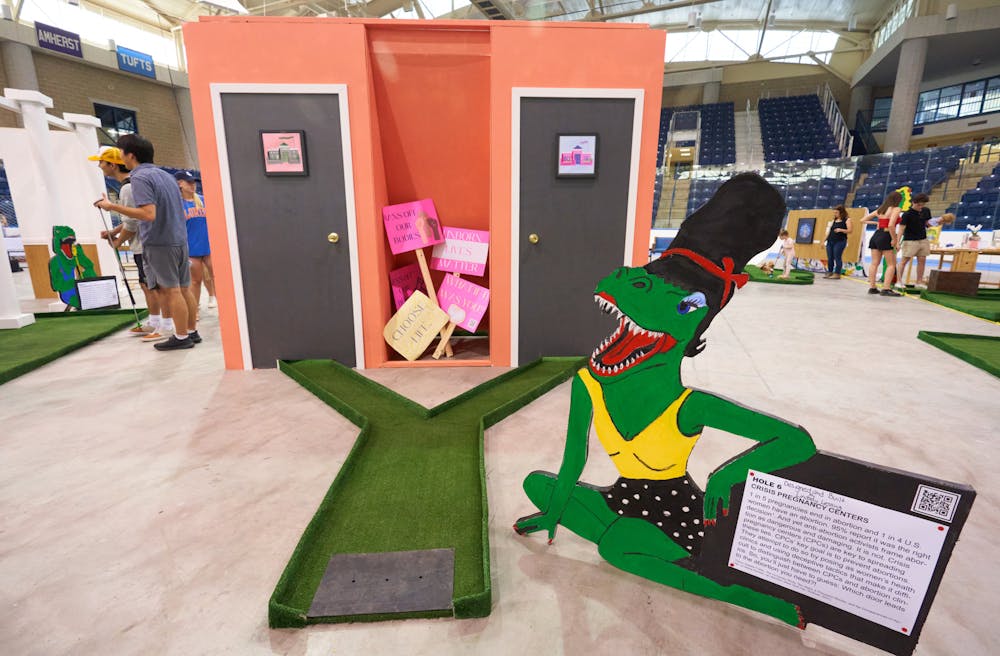This past summer, Middlebury’s hockey rink was transformed into a reproductive justice themed-mini golf course.
The temporary makeover was undertaken by students from Gender, Sexuality, & Feminist Studies Professor Carly Thomsen’s Feminist Building class, along with Thomsen’s Politics of Reproduction class, which she co-taught with Christian A. Johnson Memorial Building Director Colin Boyd this past spring.
Thomsen said the project was the first of its kind, calling it a “roaring success.”
“Professor Thomsen and I co-taught the Feminist Building class as a means to build this course,” Boyd told The Campus . “The concept behind it was to create a class where there’s the rigorous content of reproductive rights and politics, but also a collaborative environment where all the students are making designs, submitting proposals, and basically making everything from scratch.”
The course consisted of 11 holes, each focused on a different topic related to reproductive justice. According to Boyd, the course was constructed to mimic a typical town, each hole with a different architectural designation, such as a bar, prison, hospital or justice hall, and information on reproductive justice issues that would come up in these places.

“These places are all places that people encounter on a regular basis,” Thomsen told The Campus. “In some ways, that can really overwhelm a person because we are so steeped in oppression, disenfranchisement and discrimination that it is literally built into the social fabric of our world.”
Modeled after a hospital, the first hole’s topic was the history of science and medicine. Boyd described the station as a corridor with white-washed walls and fluorescent lighting, creating a clinical feel.
“There was an involuntary hysterectomy case printed and hung on the wall with the names redacted, from the 1930s or 1940s, and the person was deemed unworthy of having children, so this person was forcibly [sterilized]… it was very powerful,” Boyd said.
Eliot Nebolsine ’25, a student from both spring classes involved in developing the course described the project as the “fusion of reproductive justice principles into one playful, accessible piece of public art.” Nebolsine's focus was on the intersection between reproductive justice and incarceration — she collaborated with two other students in the Politics of Reproduction course to construct the Incarceration Hole and write the content to go along with it.
“My goal in the project was to take the highly privileged and inaccessible knowledge found in gender studies and turn it into something everyone can understand and interact with,” Nebolsine said. “The focus on the fun and playfulness of the course allowed us to approach academia from a new angle.”
For Thomsen, the written content was the most important component of the project.
“People were so impressed by looking at the mini golf course, but the mini golf course was a mechanism to get people to engage with the other, very significant part of the project: all of the content and the art associated with it,” she said.
Each hole featured various QR codes for players to scan, amounting to 75 QR codes total across the course. The students in Thomsen and Boyd’s courses compiled about 60 pages of information on these topics of reproductive justice, which they translated to 250-word educational text linked from each QR code.
Another hole gave players the choice to enter one of two identical doors, one of which led to a reconstructed crisis pregnancy center, and the other to an abortion clinic. “It’s meant to gesture to the fact that crisis pregnancy centers intentionally try to confuse people into thinking that they are abortion clinics, and you don’t necessarily know what you’re getting yourself into until it’s too late,” Thomsen said.
A station called the Transportation Hole was the result of collaboration between Middlebury students and students from Metropolitan State University in Denver. Students from Metropolitan State University’s Gender Institute for Teaching and Advocacy designed the set while participants in Vermont Works for Women’s Trailblazers program executed the construction.

Thomsen estimated that by the end of the summer, around 1800 different people had played the course.
“So many people said, ‘I learned so much,’ and that to me was evidence that this was a great success,” Thomsen said.
According to Thomsen, Middlebury students often discuss these topics of reproductive justice in the classroom, but not everyone has access to a Middlebury education. Because of this fact, making the exhibit accessible to the public and moving these conversations beyond the classroom was a priority to Thomsen and her students.
Thomsen and Boyd are now in the process of applying for more grant funding to create a second version of the golf course. Replicating the original mini-golf course is not possible, as some art was unable to be preserved, but the educational content was made to endure.
“This was basically a pilot test. Now we’re going to see if it is possible to take this show on the road,” Thomsen said. “It will be a new iteration of the mini-golf course, but the content that we created in The Politics of Reproduction will be able to easily travel. My real hope is that the golf course can inspire people to think about what activism can look like in a more capacious way.”




